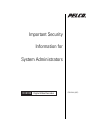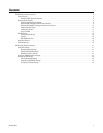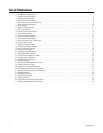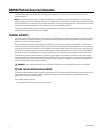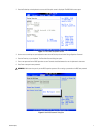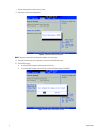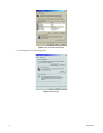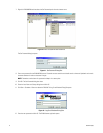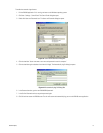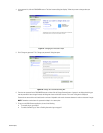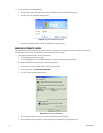
6 C2641M-A (9/07)
DX8100 Platform Security Information
The DX8100 Series digital video recorder (DVR) is equipped with an extensive set of security measures to provide the user with secure,
uninterrupted service.
NOTE: While great care has been taken in the design and development of the DX8100 to ensure a secure DVR platform, it is not feasible to
protect a system from all internal and external security risks if it is connected to an unsecured network. In addition to the robust security features
built into the DX8100, you should consult with your network administrator, information technology department, and facilities manager to ensure
that all possible measures are being taken to ensure the safety and security of the DX8100 and its data.
The following sections describe the security features of the DX8100 in detail. These sections are intended for system administrators who are
responsible for the maintenance and security of the DX8100.
PHYSICAL SECURITY
Like any other video recording device, including VCRs, the security of the DX8100 is largely dependent on the physical security of the unit itself.
When an intruder has access to the hardware, it will be possible to remove components and retrieve recorded data. Units should therefore be
installed in a location that is physically secured.
Because the dimensions and underlying technologies of the DX8100 are similar to those of a modern personal computer, it is possible to rack
mount units and access the mouse and keyboard inputs using commercially available keyboard video mouse (KVM) switches. This may bring the
control of the units outside of the secured area. One area where this could cause a problem involves access to the system’s basic input/output
system (BIOS). Pelco recommends that the unit be given a BIOS supervisor password upon completion of installation. A unique BIOS supervisor
password will help prevent remote operators from changing boot parameters that could allow the unit to be booted using unsecured sources.
The DX8100 is engineered to reboot automatically in the event of a system problem. The capability of recovering from certain errors without
operator intervention minimizes the potential amount of time a DVR will be offline. To retain this capability, it is important that a password be set
for BIOS Supervisor account only and not for the BIOS User account. Setting a password for the BIOS User account would force operators to
re-enter this password each time the system is rebooted.
SETTING THE BIOS SUPERVISOR PASSWORD
The following procedure describes how to set the BIOS supervisor password. This procedure should be performed only by advanced users with
extensive experience with PC computer technology. Changing BIOS settings to incorrect values may result in the degradation of system
performance or cause your DVR to stop working.
To set the BIOS supervisor password:
1. Boot the DX8100 Series DVR by turning on the power switch.
WARNING: Always scan removable media, such as CD-RW and DVD-RW disks, for viruses before inserting them into the DX8100.



